What is a fillet and what are they used for?
A fillet is a ceiling plinth that is used to hide the gap between the wall and the ceiling. Its width is selected depending on the height and volume of the room, for example, only narrow models should be used for a small room.
Types of ceiling plinths
Materials used for manufacturing.
Durable, elastic, bends well and is suitable for decorating even a rounded surface. It successfully imitates stucco, complex ornaments and patterns, and is suitable for painting with any paints.
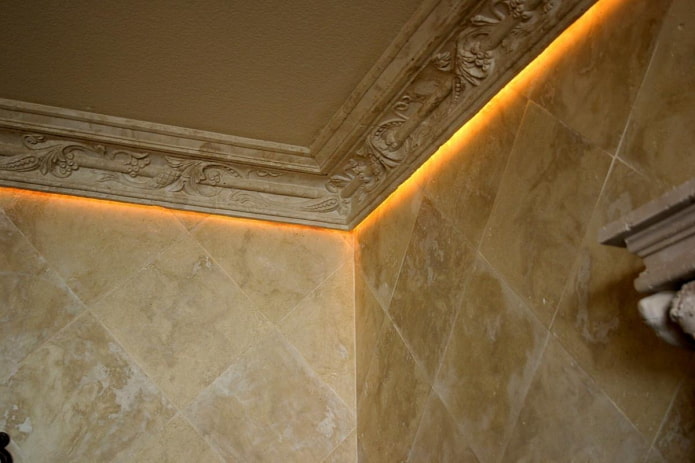
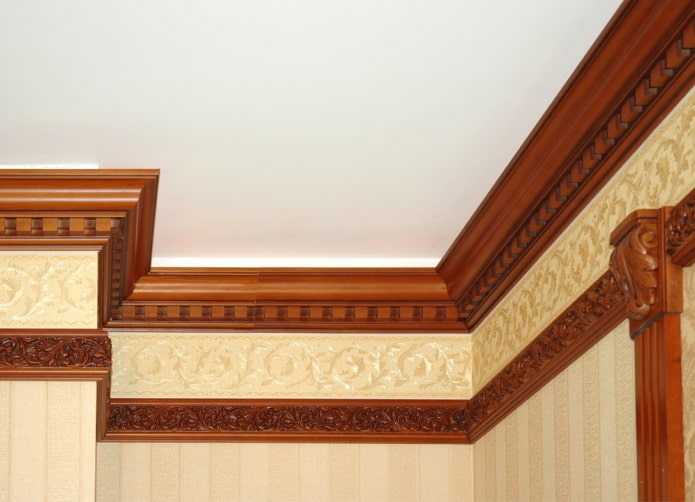
It is distinguished by its low price and easy installation. The only downside is that it is very fragile and does not bend at all.
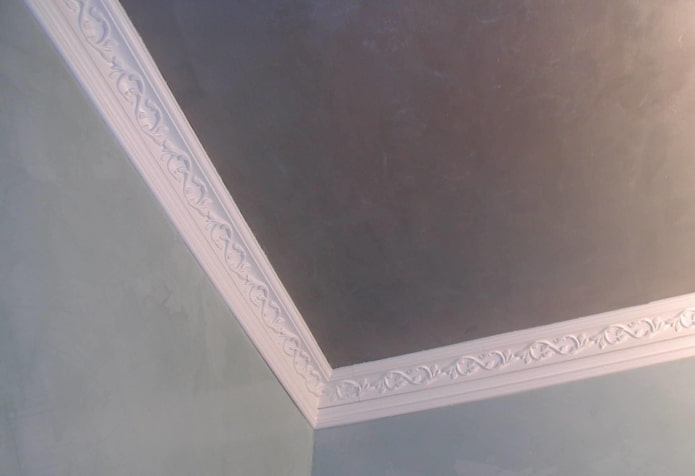
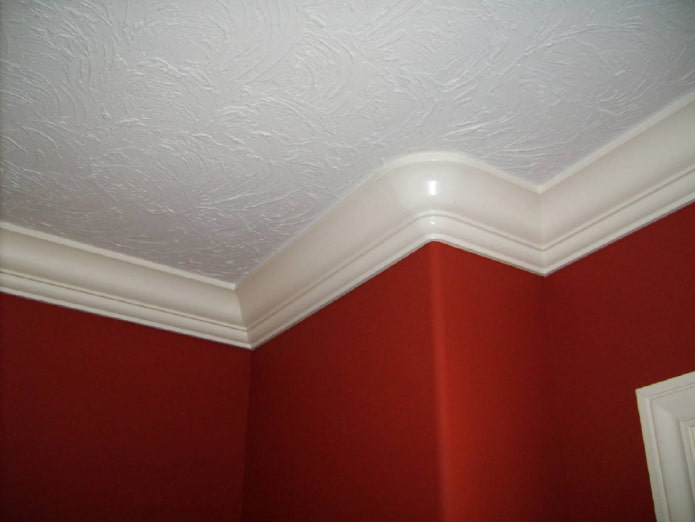
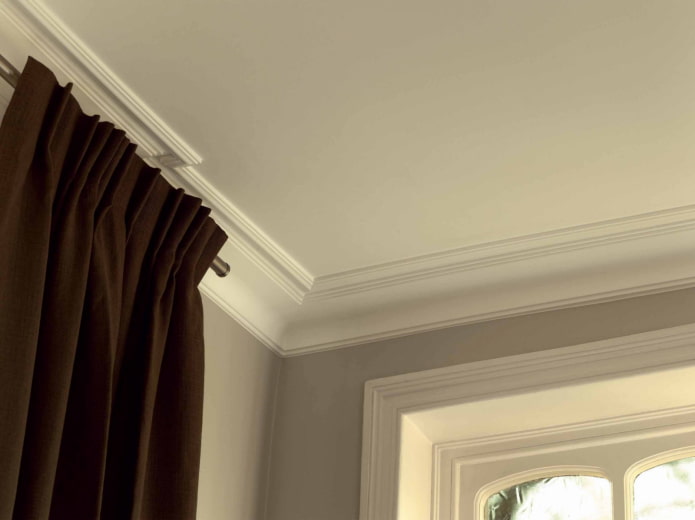
An environmentally friendly, rigid material, resistant to mechanical impacts and perfect for rooms with high humidity.
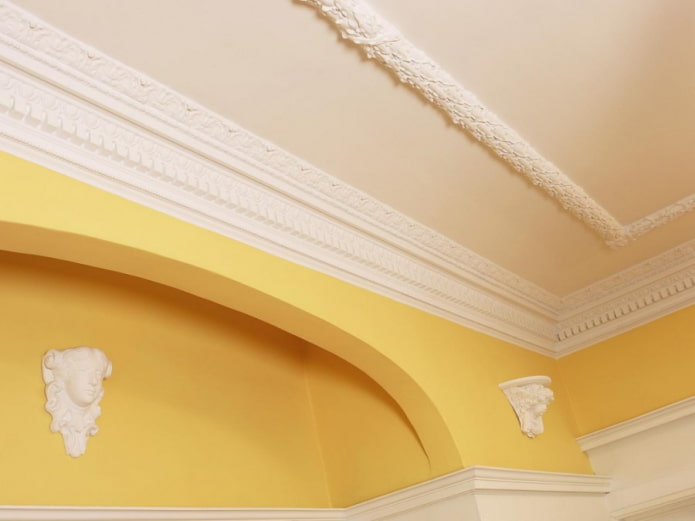
It has an exclusive, aesthetic and rich appearance. Gypsum models are very reliable, environmentally friendly and fire-resistant.
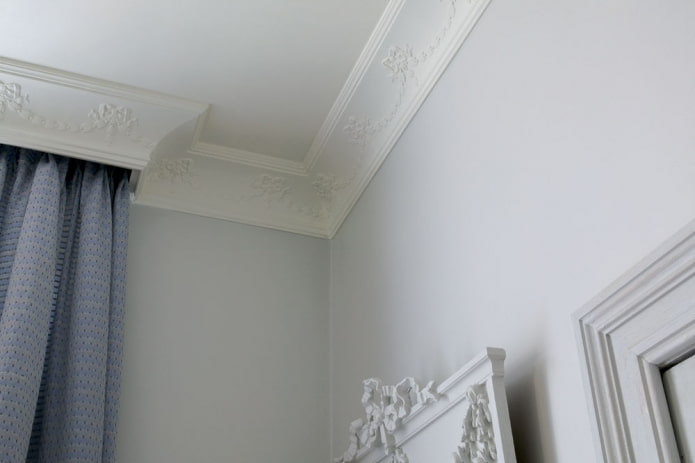
Types of skirting board textures
The main types, which are classified by texture parameters:
- Smooth. It has a flat smooth surface, without depressions, patterns and ornaments. It looks inconspicuous and is perfect for decorating almost any interior.
- Extruded. It is distinguished by longitudinal depressions with ready-made grooves.
- Injection. It has a convex relief surface and has a granular structure. Such ceiling moldings are an independent decor.
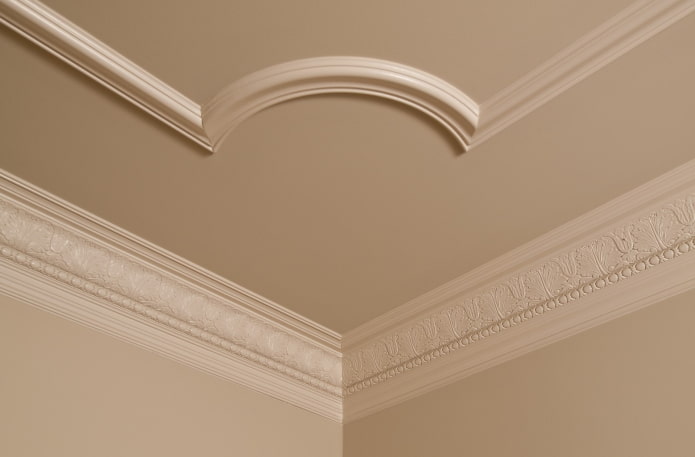
The photo shows an injection ceiling molding in a beige shade.
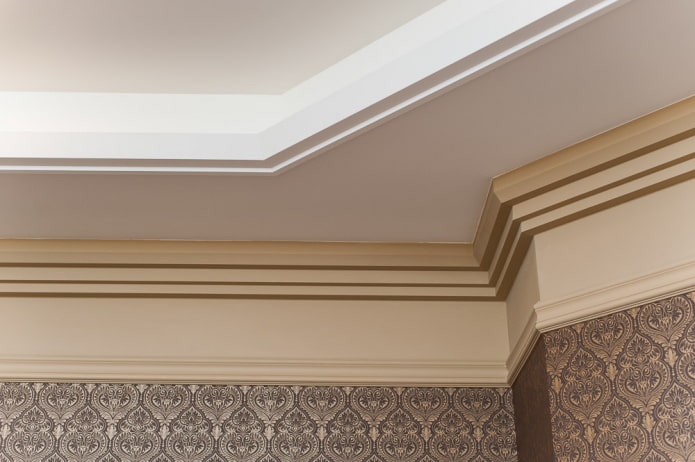
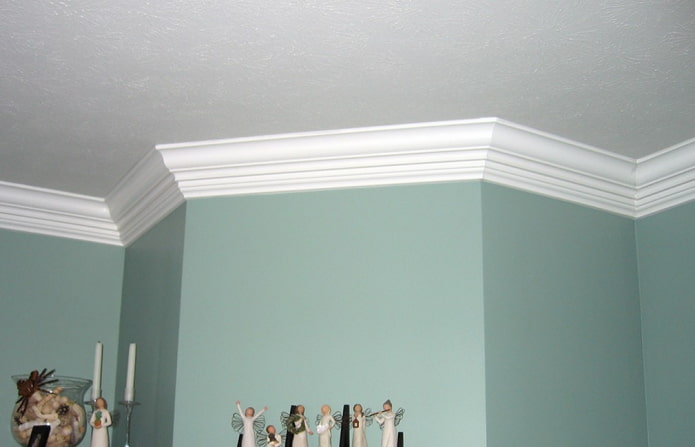
What sizes are there?
There are two main types: wide and narrow. Other tips for choosing the size will be given below.
Narrow
The size range is from 10 to 50 mm. Thin laconic moldings are suitable for small rooms with low ceilings.
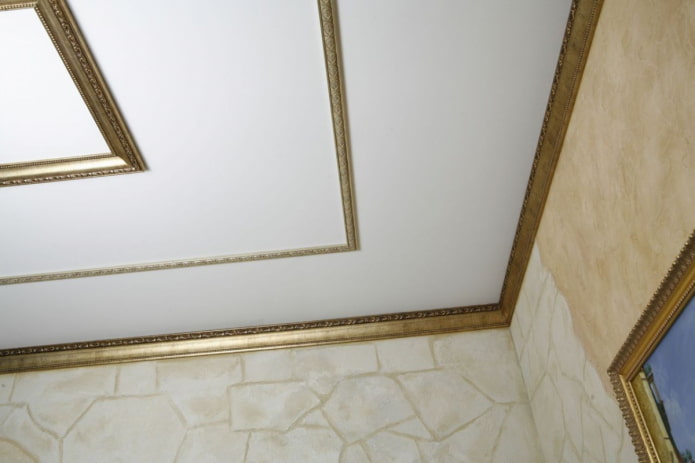
Wide
Allows you to visually smooth out corners and hide the imperfections and unevenness of the walls. It has a range from 160 to 350 mm., and is most often used to decorate spacious rooms.
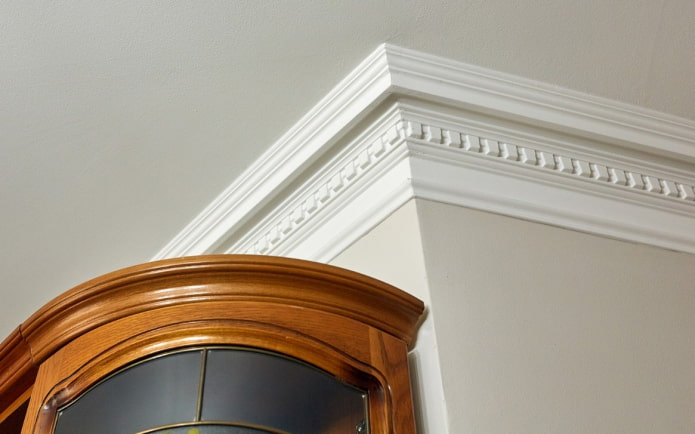
Types of fillet shapes
There are several types:
- Straight. The traditional and most common option, which is found in almost any interior.
- Flexible (soft). Such radius baguettes allow you to organize smooth shapes, thereby hiding the flaws, crooked angles and imperfections of the ceiling space.
- With a cable channel. Have additional internal space in which you can hide the wires.
Each of the listed forms carries a certain focus and functionality.
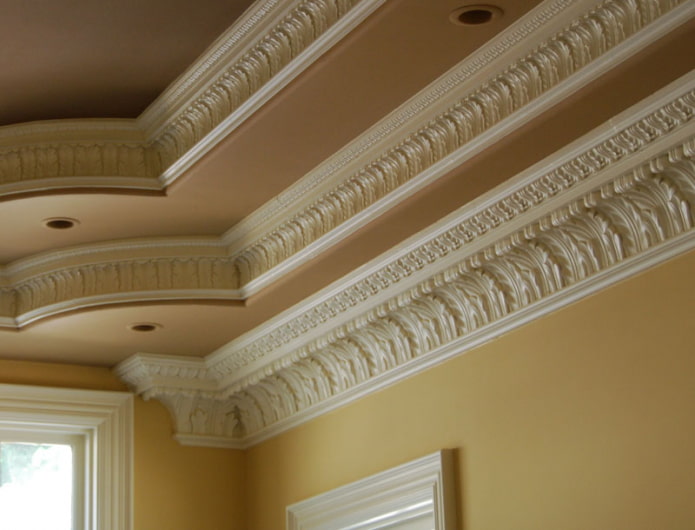
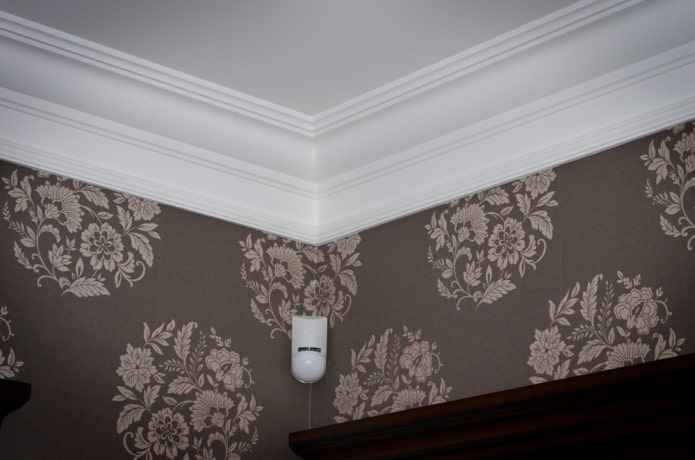
What colors are skirting boards?
Colored moldings change the overall perception of the interior and the room as a whole. In addition, ceiling plinths can be painted in any color by yourself.
- White.
- Black.
- Gold.
- Brown.
- Beige.
- Gray.
- Chrome.
- Yellow.
- Blue.
- Green.
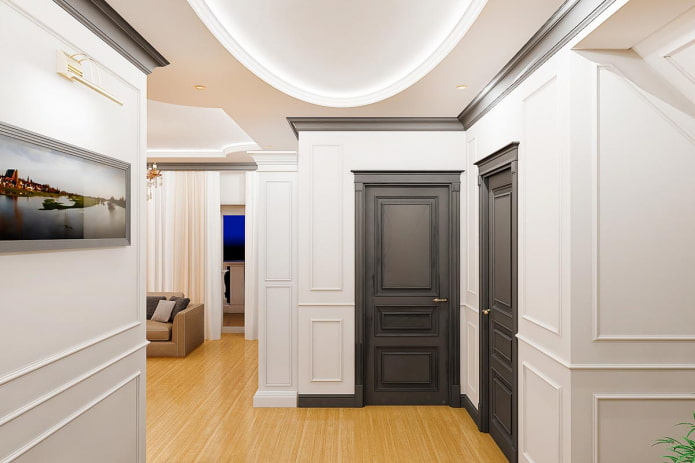
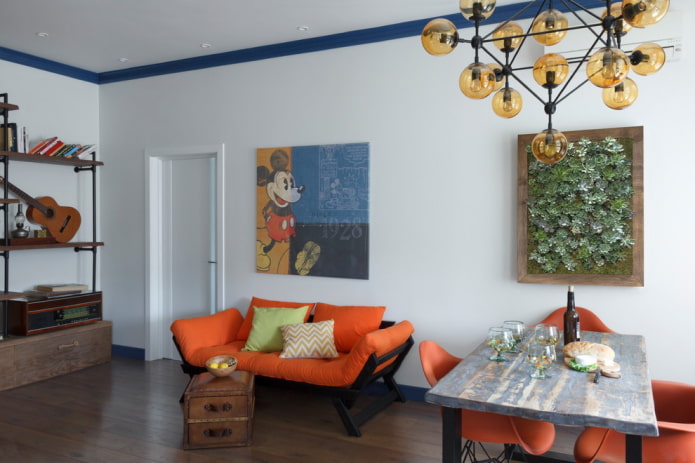
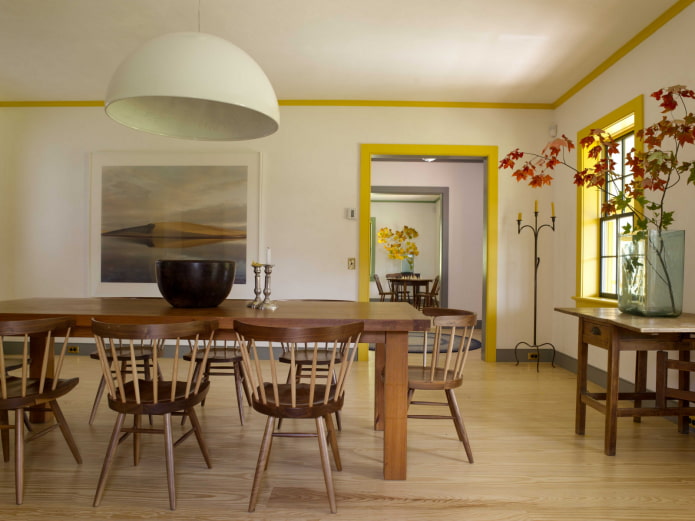
The photo shows a narrow yellow ceiling molding in the interior of the dining room.
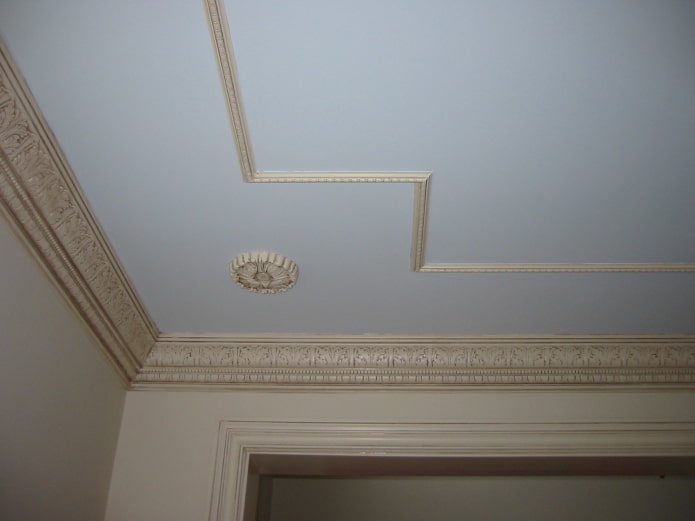
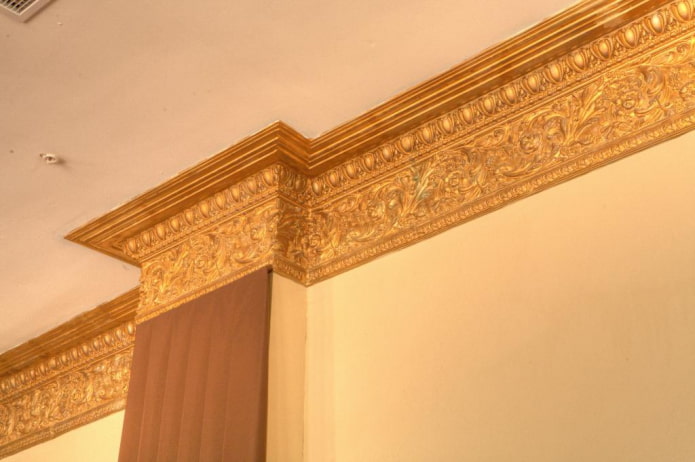
To visually expand the space, use baguettes that match the color of the ceiling; to increase the height of the room, use ceiling moldings in the color of the walls.
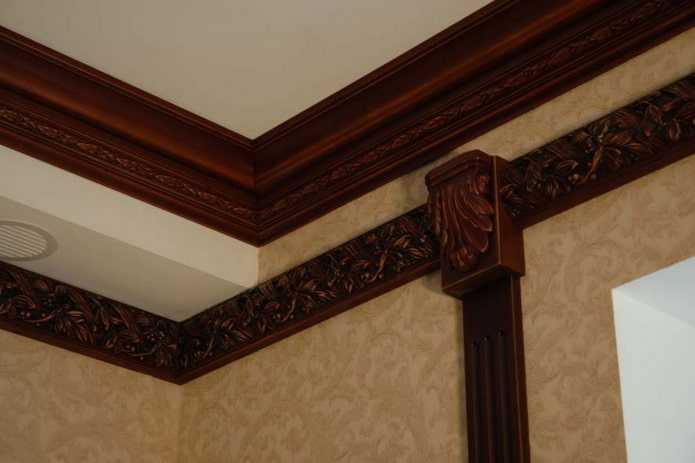
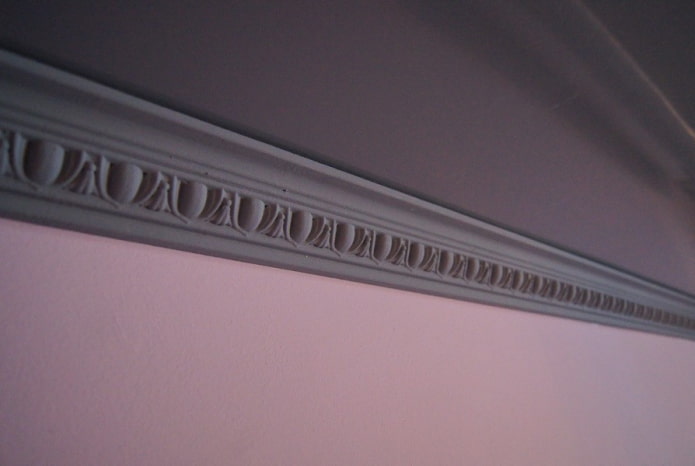
Design options and patterns
A huge variety of decor gives the baguettes a more unique look.
- Stucco molding. Always looks expensive and respectable. Its appearance brings notes of antiquity and luxury and is best combined with classic interiors.
- With inserts. Inserts can be made in various colors, for example, white with gold or dark wenge and silver. They are selected in combination with the color of the ceiling or walls.
- Patterns and ornaments. Transform, enliven the ceiling space, deprive it of monotony and set a single style for the room.
- Ladder. The original section in the form of a ladder creates a stepped ledge, which is quite popular in the design of many interiors.
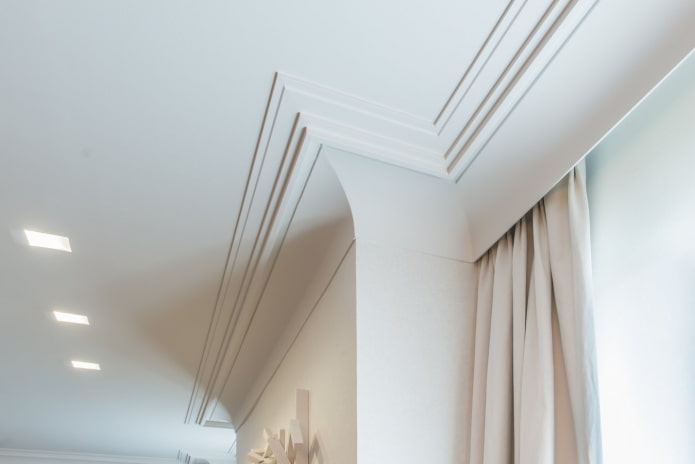
The photo shows a white wide ceiling molding in the form of a ladder.
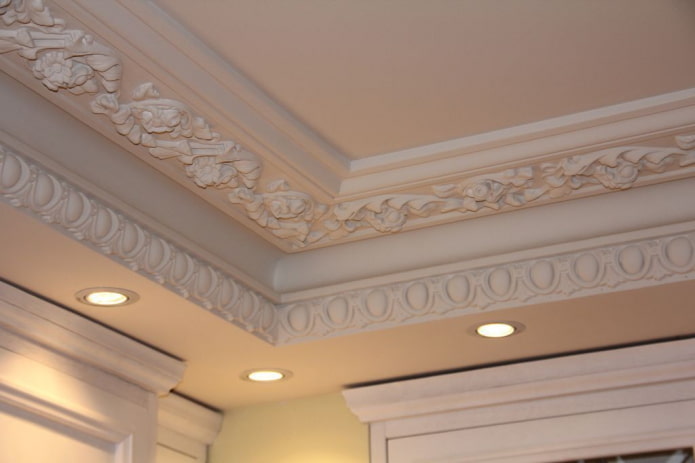
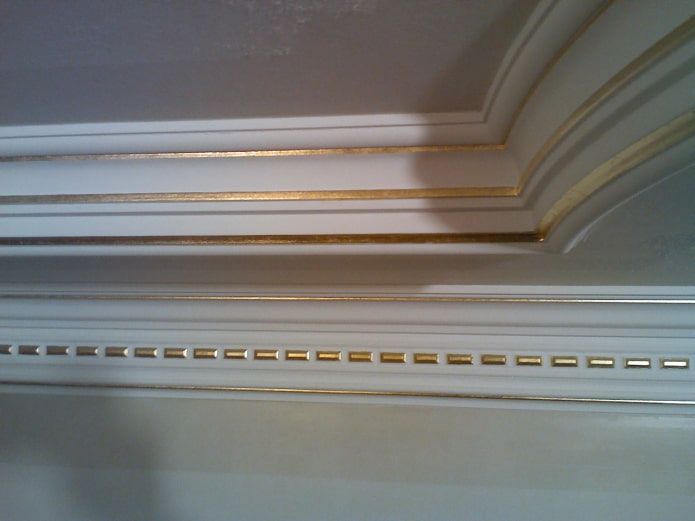
Baguettes with a variety of designs harmonize the decor, give the room a special character and simply look very impressive.
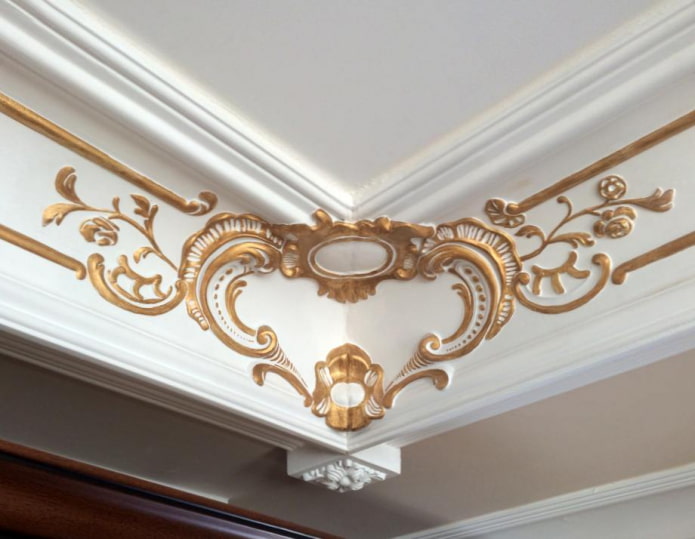
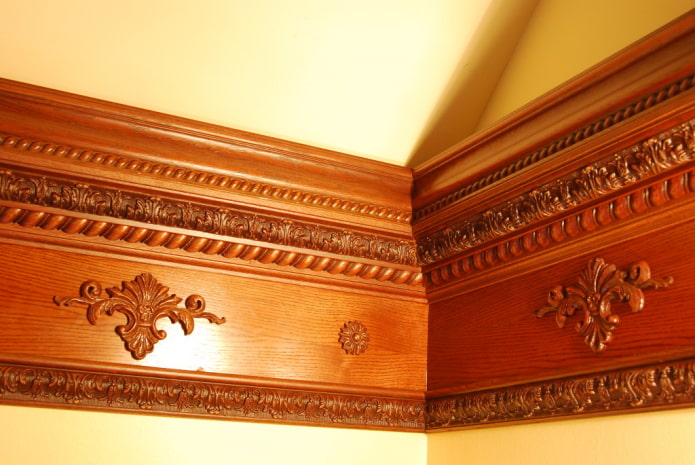
For what types of ceilings can decorative skirting boards be used?
The main types of ceiling coverings to which moldings are used:
- Stretch ceiling. Such a skirting board not only protects and hides cracks and gaps between the walls and the ceiling, but is also a rather original element of decorative finishing.
- Suspended plasterboard ceiling. For plasterboard two-level or multi-level structures, almost any model will be appropriate. Polyurethane or polystyrene skirting boards look especially organic with suspended ceilings.
- Wooden ceiling made of clapboard. Wooden figured and carved moldings in combination with an identical ceiling texture look luxurious and harmonize perfectly with each other.
- PVC panels. Plastic baguettes are better suited here, as they will noticeably highlight and emphasize the design of the entire ceiling.
- Ceiling tiles. Skirting boards will not only complete the overall design, but will also greatly simplify gluing ceiling tiles along the edge of the ceiling.
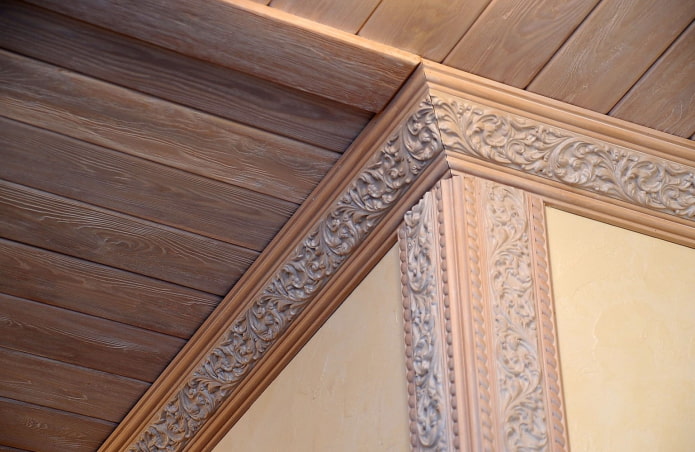
The photo shows a wooden openwork baguette in combination with ceiling clapboard.
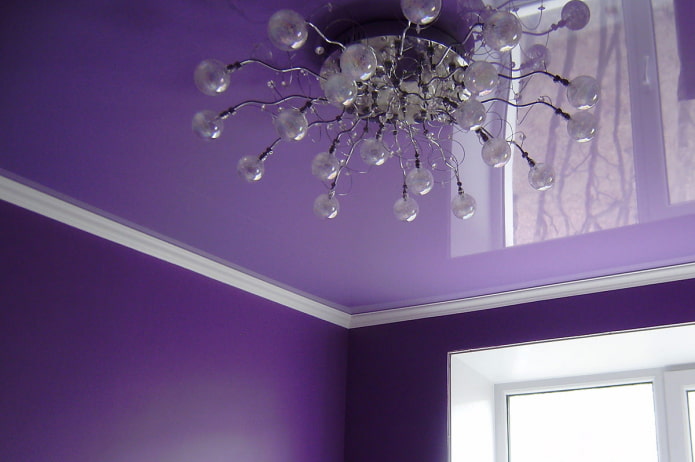
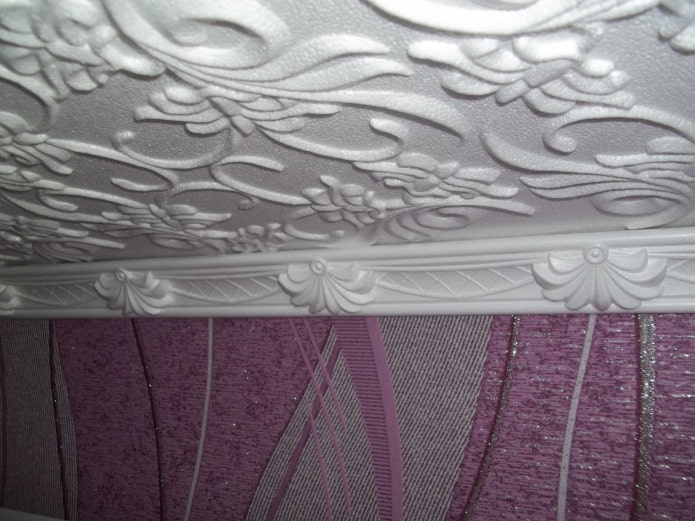
Such models create a single composition on the ceiling and an additional geometric effect.
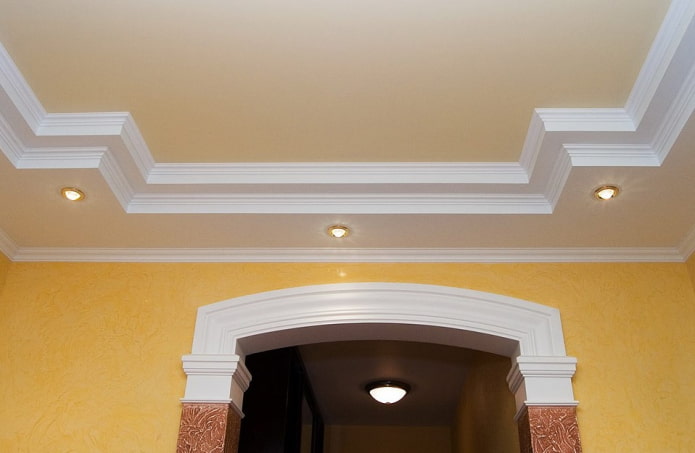
The photo shows a two-level plasterboard ceiling structure with polystyrene baguettes.
Photos in the interior of rooms
Baguettes can become an indispensable and main decor of any room.
Bathroom
Mouldules allow you to beautifully decorate your bathroom, give it the desired appearance or set the style.
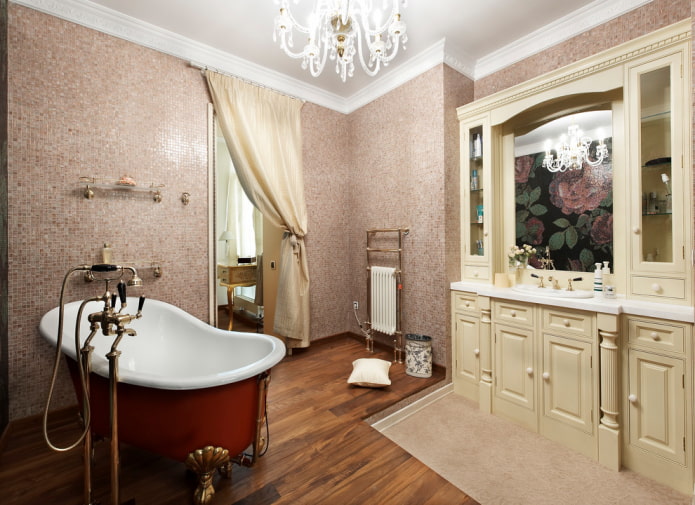
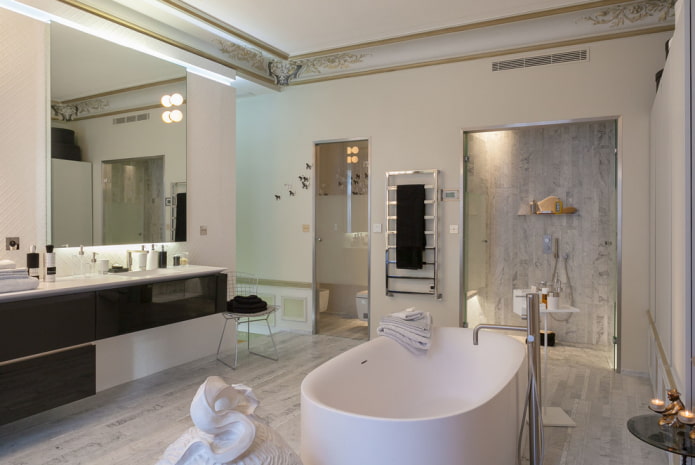
Kitchen
Classic simple ceiling models made of polyurethane or polystyrene, which are resistant to high humidity and easy to clean, will be appropriate here. Wooden skirting boards for the kitchen, it is advisable to choose without unnecessary patterns and ornaments.
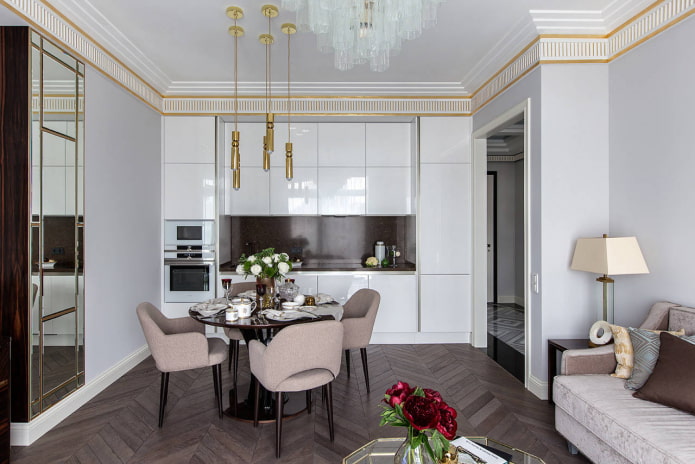
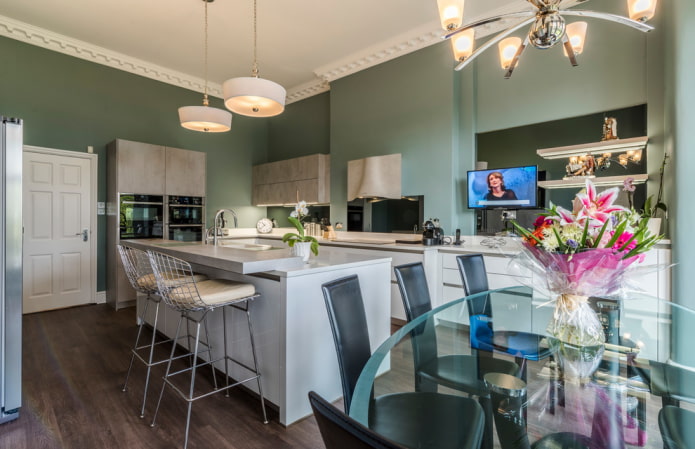
Living room
Baguettes can completely change the interior of the living room, create unusual color and shade combinations and simply decorate the ceiling space.
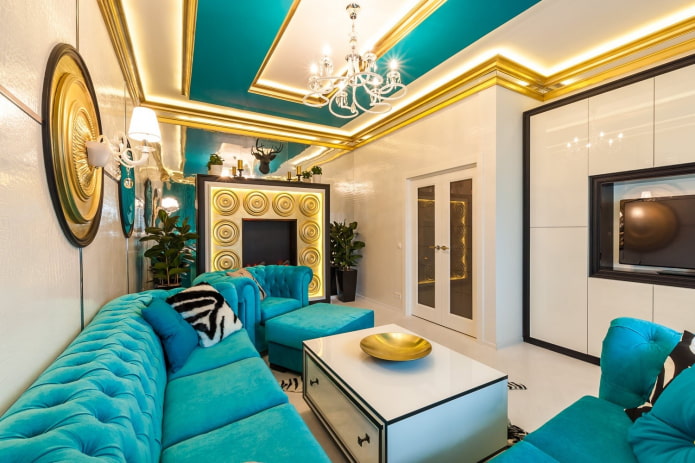
The photo shows a small hall with golden ceiling moldings.
Balcony
Narrow moldings are suitable for decorating a small balcony, which will allow you to visually balance and balance the narrow space.
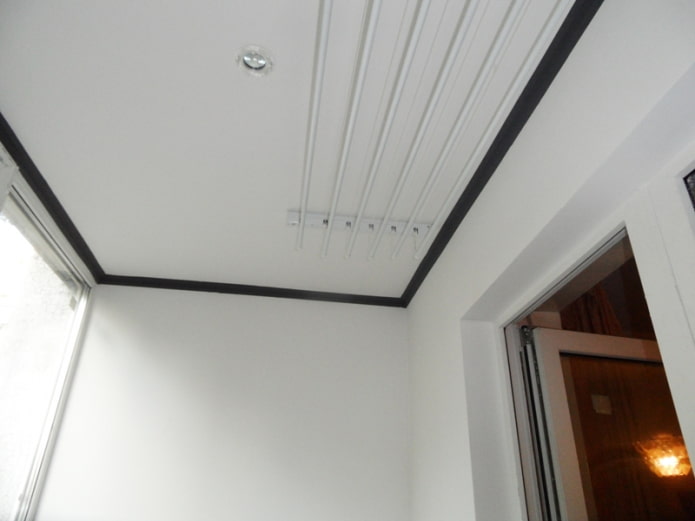
Children’s room
Properly selected skirting boards by color will allow you to create a harmonious design of the children’s room, create smooth color transitions on the ceiling and thereby add additional height to the room.
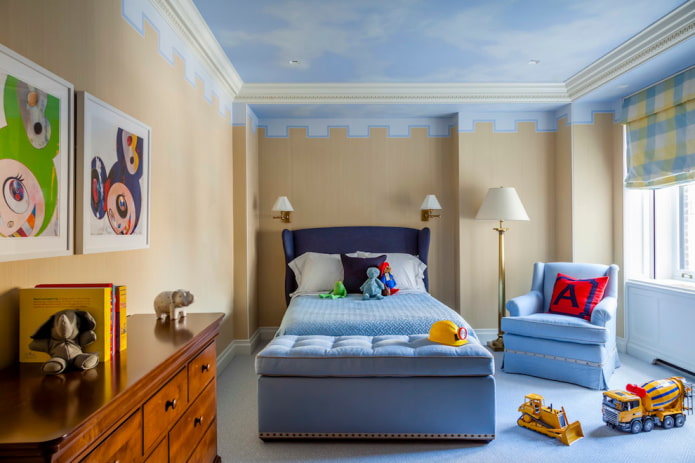
A selection of photos of skirting boards in various styles
A wide variety of models and decor allows you to choose an option for a room with any stylistic direction.
Modern
Models of unpretentious form with simple lines will look especially organic in this style. Due to their versatility and huge selection, they will allow you to create a stylish and modern design.
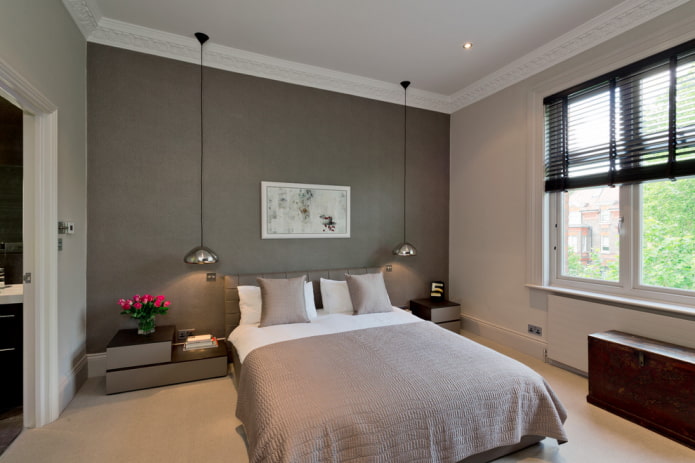
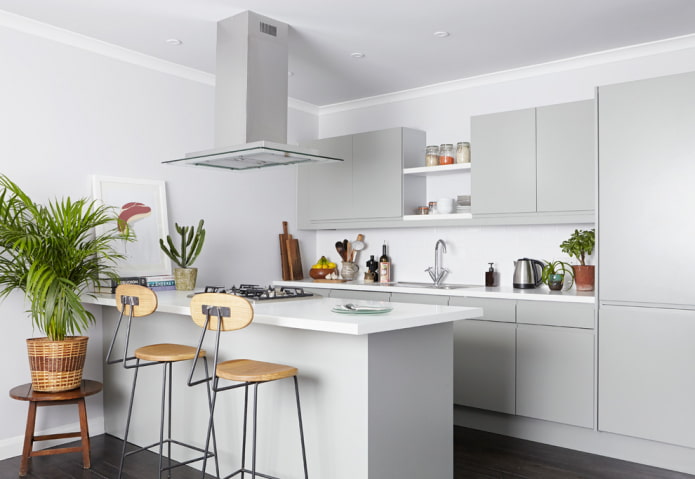
Classic
Gypsum, wooden or polyurethane skirting boards with carved patterns, stucco or gilding are perfect for an interior in a classic style.

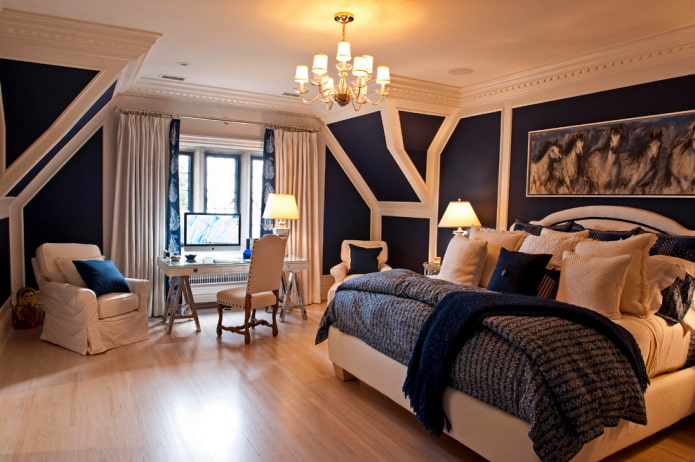
Loft
This style does not imply intricate finishing. Light-colored moldings with a simple and laconic design will suit here.
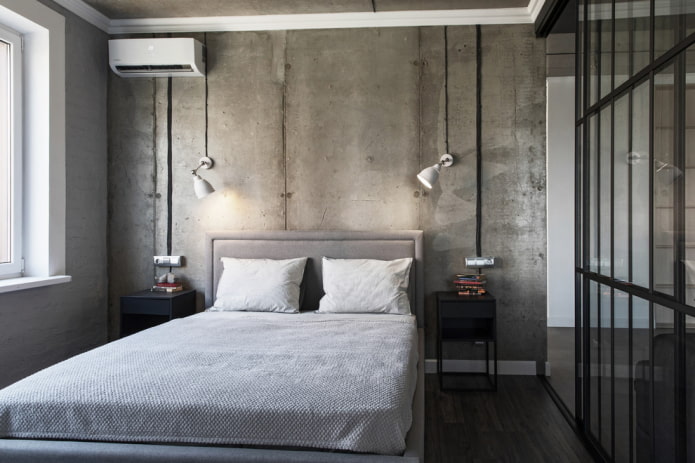
The photo shows a wide white ceiling molding in a loft-style bedroom.
High-tech
Skirting boards with clear lines and shapes, smooth, decorated with lighting, will look unusual and emphasize the futuristic and fantasy interior.

Minimalism
Thin baguettes with a discreet design, made in discreet colors, will harmoniously echo the rest of the minimalist decor, and will not attract unnecessary attention.
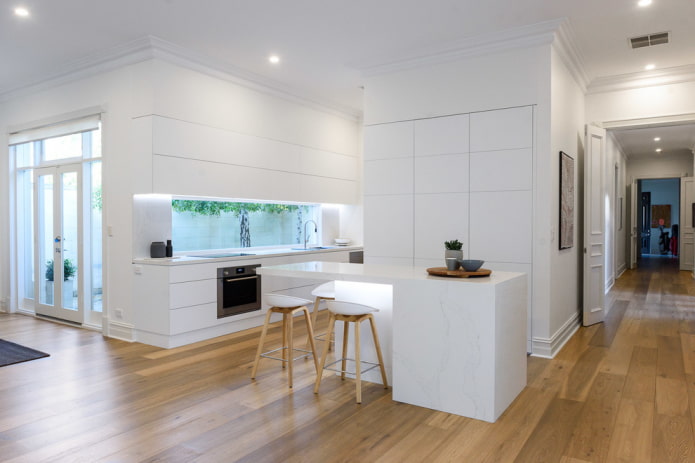
Scandinavian
White moldings without frills will be especially appropriate here, which will emphasize restraint and coldness of the Nordic style.
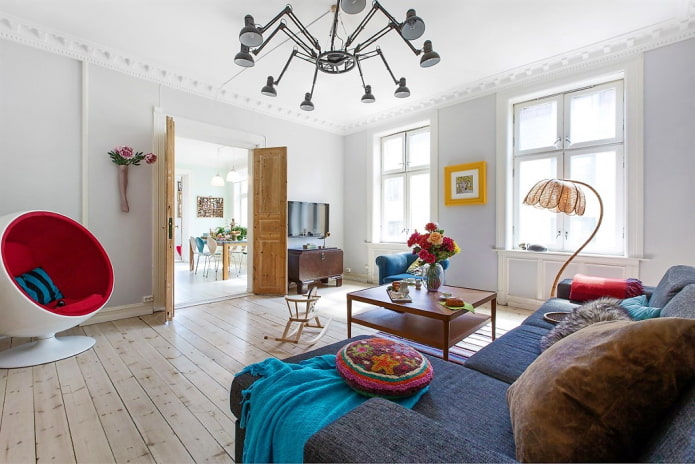
The photo shows a white ceiling molding in a living room, made in the Scandinavian style.
Ideas for skirting boards with backlighting
LED strip gives the baguettes an even more original and unique look. This type of lighting goes well with other lighting fixtures, such as a chandelier, sconce or spotlights.
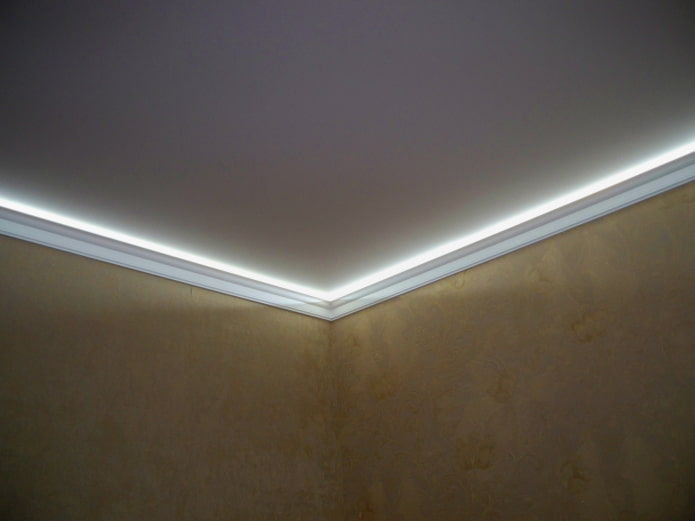
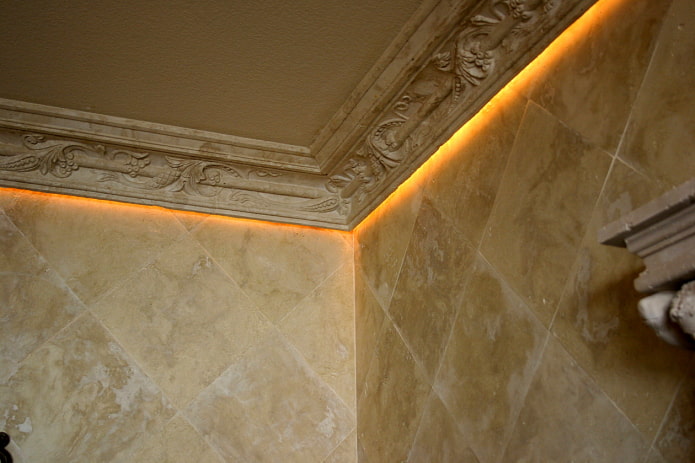

The photo shows a children’s room with a wide ceiling molding decorated with lighting.
Examples for non-standard ceilings
The functionality of the moldings makes it possible to use them even in non-standard solutions.
Two-level
The moldings look especially beautiful on such a ceiling. In addition, they allow you to hide the transitions between levels.
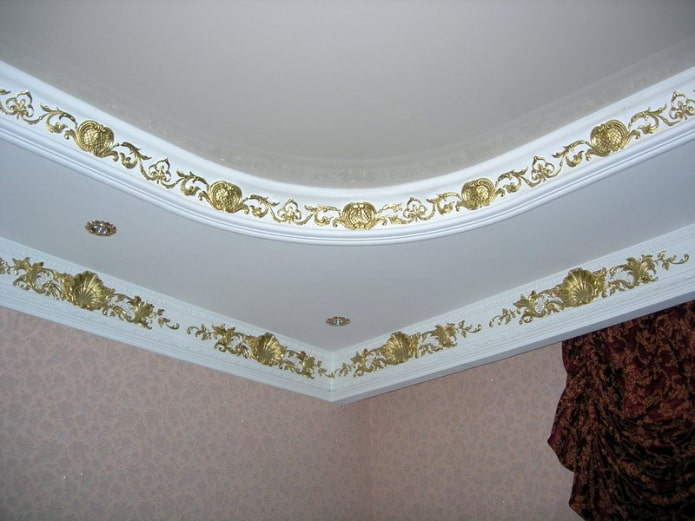
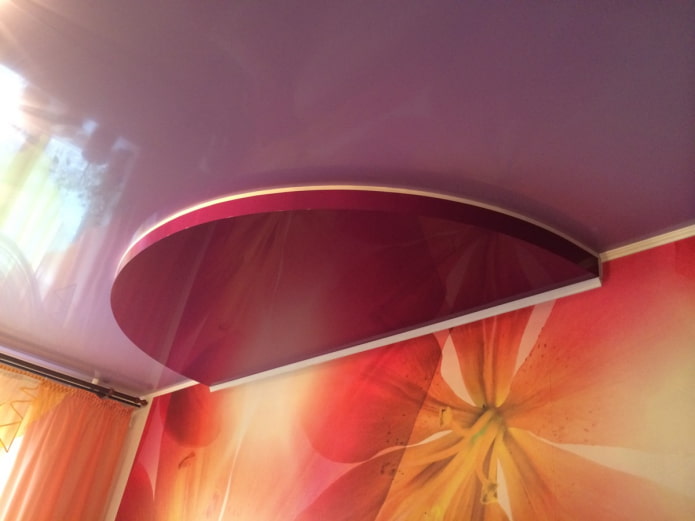
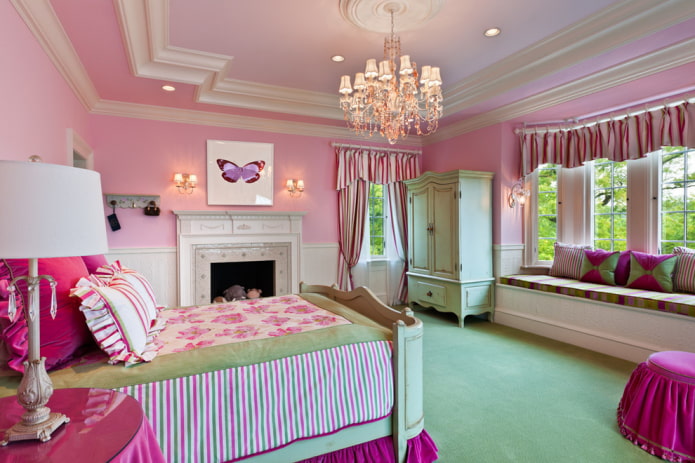
The photo shows a two-level ceiling structure decorated with wide skirting boards.
Sloping ceiling
Sloping ceiling skirting boards on the attic floor of a country house or wooden house should be flexible in order to neatly decorate the numerous corners in the room.
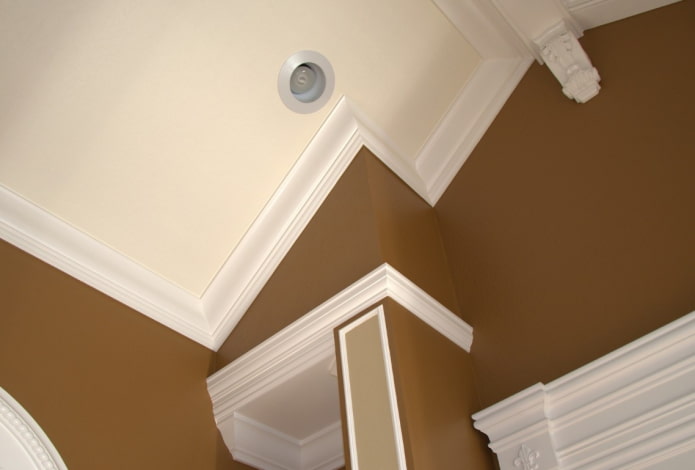
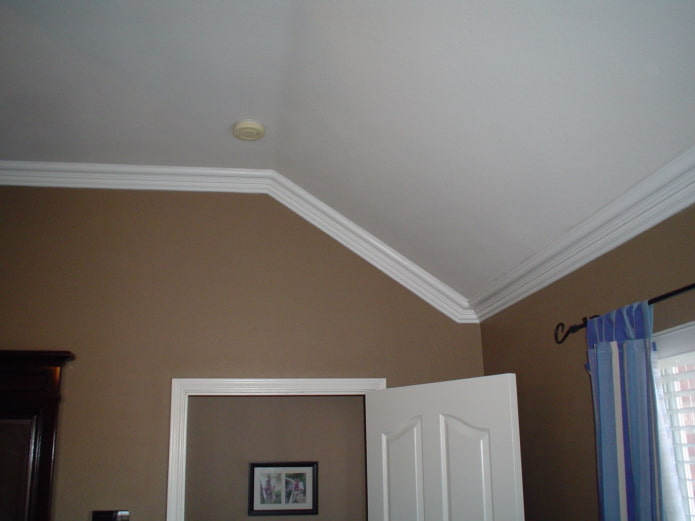
Rounded
Radius moldings are perfect for a rounded ceiling. Such elastic models will easily allow you to decorate semicircular corners without any problems.
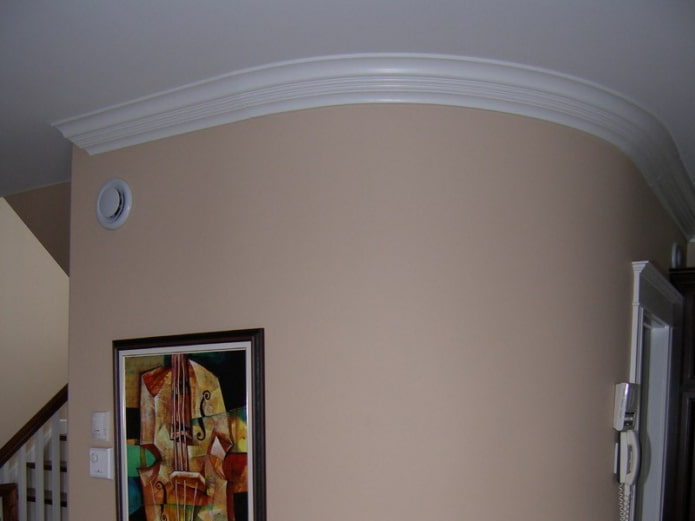
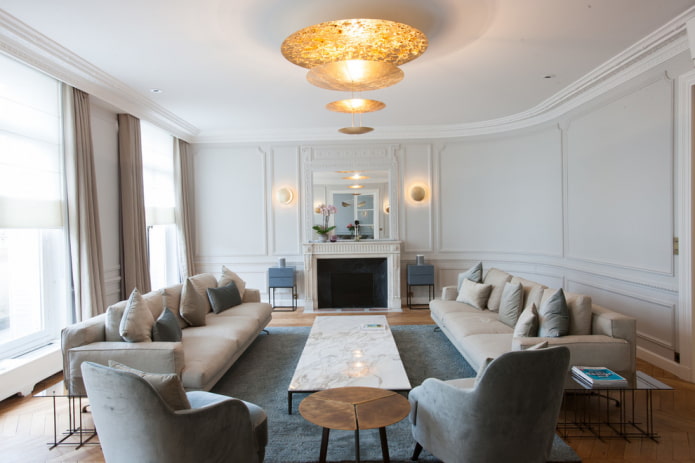
How to choose a ceiling molding?
Several recommendations for choosing a ceiling molding:
- The moldings should preferably match the color of the ceiling or walls. This will create a more integral composition.
- Wide ceiling baguettes hide defects and flaws of the room well.
- For low ceilings, you should not use bulky skirting boards, as they visually hide the height of the room.
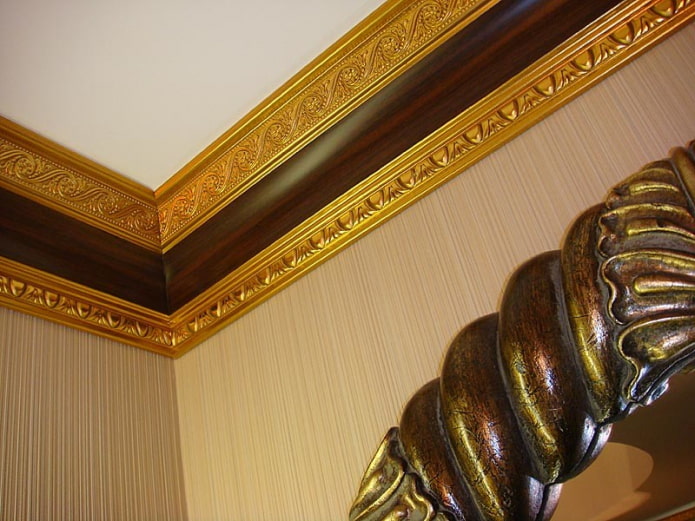
Table of correspondence between room size and skirting board width
The correct ratio of sizes.
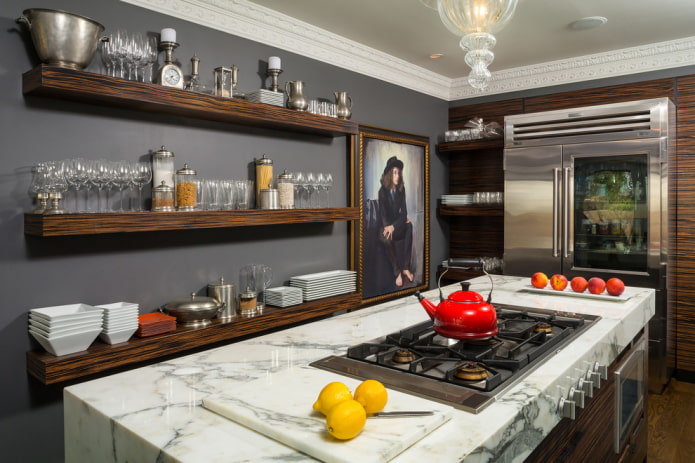
Now reading:
- Fabric and PVC stretch ceilings: comparison, advantages and choice.
- 35 Stylish Photo Spots in the Interior: Types and Design Solutions
- How to choose a thin orthopedic mattress topper for a sofa?
- 10 hidden storage systems for compact apartments that are not conspicuous.
- Your Comprehensive Guide to Buying a Used Skoda Karoq